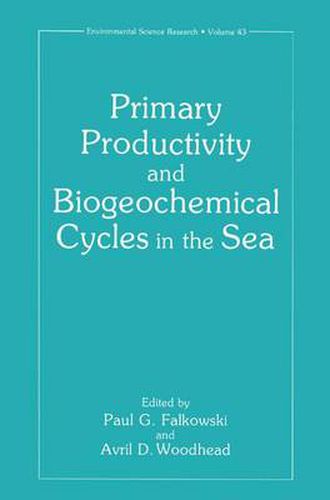Readings Newsletter
Become a Readings Member to make your shopping experience even easier.
Sign in or sign up for free!
You’re not far away from qualifying for FREE standard shipping within Australia
You’ve qualified for FREE standard shipping within Australia
The cart is loading…






This title is printed to order. This book may have been self-published. If so, we cannot guarantee the quality of the content. In the main most books will have gone through the editing process however some may not. We therefore suggest that you be aware of this before ordering this book. If in doubt check either the author or publisher’s details as we are unable to accept any returns unless they are faulty. Please contact us if you have any questions.
Biological processes in the oceans play a crucial role in regulating the fluxes of many important elements such as carbon, nitrogen, sulfur, oxygen, phosphorus, and silicon. As we come to the end of the 20th century, oceanographers have increasingly focussed on how these elements are cycled within the ocean, the interdependencies of these cycles, and the effect of the cycle on the composition of the earth’s atmosphere and climate. Many techniques and tools have been developed or adapted over the past decade to help in this effort. These include satellite sensors of upper ocean phytoplankton distributions, flow cytometry, molecular biological probes, sophisticated moored and shipboard instrumentation, and vastly increased numerical modeling capabilities. This volume is the result of the 37th Brookhaven Symposium in Biology, in which a wide spectrum of oceanographers, chemists, biologists, and modelers discussed the progress in understanding the role of primary producers in biogeochemical cycles. The symposium is dedicated to Dr. Richard W. Eppley, an intellectual giant in biological oceanography, who inspired a generation of scientists to delve into problems of understanding biogeochemical cycles in the sea. We gratefully acknowledge support from the U.S. Department of Energy, the National Aeronautics and Space Administration, the National Science Foundation, the National Oceanic and Atmospheric Administration, the Electric Power Research Institute, and the Environmental Protection Agency. Special thanks to Claire Lamberti for her help in producing this volume.
$9.00 standard shipping within Australia
FREE standard shipping within Australia for orders over $100.00
Express & International shipping calculated at checkout
This title is printed to order. This book may have been self-published. If so, we cannot guarantee the quality of the content. In the main most books will have gone through the editing process however some may not. We therefore suggest that you be aware of this before ordering this book. If in doubt check either the author or publisher’s details as we are unable to accept any returns unless they are faulty. Please contact us if you have any questions.
Biological processes in the oceans play a crucial role in regulating the fluxes of many important elements such as carbon, nitrogen, sulfur, oxygen, phosphorus, and silicon. As we come to the end of the 20th century, oceanographers have increasingly focussed on how these elements are cycled within the ocean, the interdependencies of these cycles, and the effect of the cycle on the composition of the earth’s atmosphere and climate. Many techniques and tools have been developed or adapted over the past decade to help in this effort. These include satellite sensors of upper ocean phytoplankton distributions, flow cytometry, molecular biological probes, sophisticated moored and shipboard instrumentation, and vastly increased numerical modeling capabilities. This volume is the result of the 37th Brookhaven Symposium in Biology, in which a wide spectrum of oceanographers, chemists, biologists, and modelers discussed the progress in understanding the role of primary producers in biogeochemical cycles. The symposium is dedicated to Dr. Richard W. Eppley, an intellectual giant in biological oceanography, who inspired a generation of scientists to delve into problems of understanding biogeochemical cycles in the sea. We gratefully acknowledge support from the U.S. Department of Energy, the National Aeronautics and Space Administration, the National Science Foundation, the National Oceanic and Atmospheric Administration, the Electric Power Research Institute, and the Environmental Protection Agency. Special thanks to Claire Lamberti for her help in producing this volume.